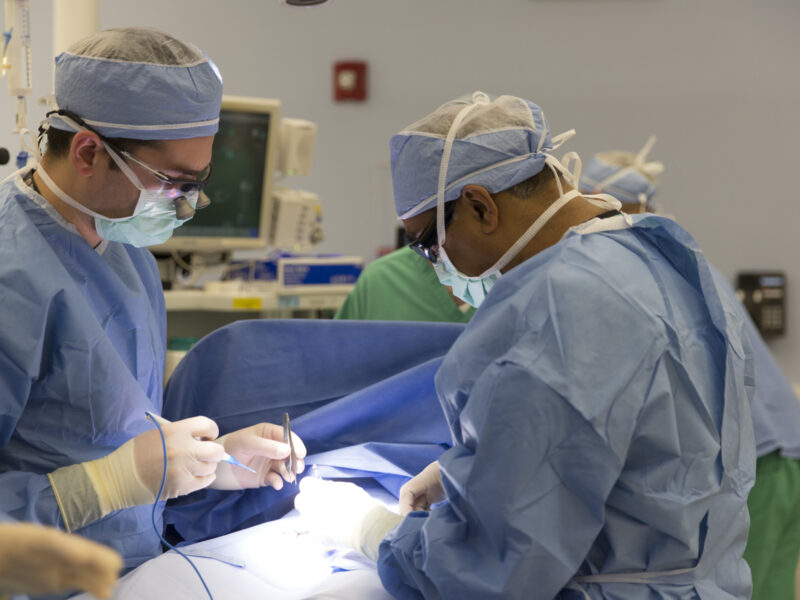High Rate of Urologic Anomalies in Children With Anorectal Malformations
High Rate of Urologic Anomalies in Children With Anorectal Malformations https://pediatricsnationwide.org/wp-content/themes/corpus/images/empty/thumbnail.jpg 150 150 Lauren Dembeck Lauren Dembeck https://pediatricsnationwide.org/wp-content/uploads/2021/03/Dembeck_headshot.gif- November 04, 2021
- Lauren Dembeck
Early recognition of urologic problems through proactive screening and urologic collaboration may help prevent of renal deterioration and allow for timely treatment in this population.
Researchers at Nationwide Children’s Hospital have recently demonstrated that urologic anomalies occur at a high rate in children with anorectal malformations and appear to increase in frequency with increasing complexity of anorectal malformation subtype.
The findings, which were published in the Journal of Pediatric Surgery, underscore the importance of screening for anorectal malformations and proactive collaboration with a clinician who has expertise in pediatric urology early in the management of children with anorectal malformations.
“Based on experience, we knew that patients with anorectal malformations often have urologic anomalies,” says pediatric urologist Molly Fuchs, MD, of Nationwide Children’s. “However, few large studies have accurately characterized the incidence or associations between severity of malformation and urologic diagnosis.”
After the colorectal program was founded at Nationwide Children’s, explains Dr. Fuchs, the team established a database for prospectively collected data to study the population of patients with anorectal malformations, and the new study included the largest cohort of this population to date.
The team aimed to determine the incidence of urologic diagnoses in children with anorectal malformations and assess correlations between the severity of anorectal malformations and the incidence and number of associated urologic diagnoses.
They retrospectively reviewed the records of 712 patients with anorectal malformation treated at Nationwide Children’s pediatric colorectal center. Patients had a mean age of 4 years and were 55% female and 45% male. All patients had undergone urologic screening according to a standardized protocol and were followed prospectively by a urologist.
“Urologic problems can be silent, and if children are not screened for them, these problems may go undetected, especially in patients that are not seen in a multidisciplinary collaborative clinic like ours,” says Dr. Fuchs. “Bringing urologic, colorectal, and gynecologic specialists together to discuss cases of anorectal malformations allows us to provide better care and protect the patients’ kidneys.”
The overall rate of urologic anomalies was significantly higher in males than females, with urologic anomalies occurring in 65% of males and 56% of females. Nearly one third of patients had two or more urologic diagnoses. In both males and females, the rate of urologic anomalies increased with increasing severity of anorectal malformation subtype, and the rates of hydronephrosis and vesicoureteral reflux increased with increased complexity of the anorectal malformation subtype.
“It used to be primarily pediatric surgeons that would take care of children with anorectal malformations. However, we now recognize that there is a lot more going on than just the colorectal aspect; caring for the patients’ bladders and kidneys is also really important, and urologists need to be closely involved as well as gynecologists for the female patients,” adds Dr. Fuchs.
Reference
Fuchs ME, Halleran DR, Bourgeois T, Sebastião Y, Weaver L, Farrell N, Vilanova-Sánchez A, Gasior A, Halaweish I, Jayanthi VR, Wood RJ, Dajusta DG. Correlation of anorectal malformation complexity and associated urologic abnormalities. J Pediatr Surg. 2021 Feb 25:S0022-3468(21)00185-8. doi: 10.1016/j.jpedsurg.2021.02.051. Epub ahead of print. PMID: 33752911.
About the author
Lauren Dembeck, PhD, is a freelance science and medical writer based in New York City. She completed her BS in biology and BA in foreign languages at West Virginia University. Dr. Dembeck studied the genetic basis of natural variation in complex traits for her doctorate in genetics at North Carolina State University. She then conducted postdoctoral research on the formation and regulation of neuronal circuits at the Okinawa Institute of Science and Technology in Japan.
-
Lauren Dembeckhttps://pediatricsnationwide.org/author/lauren-dembeck/
-
Lauren Dembeckhttps://pediatricsnationwide.org/author/lauren-dembeck/
-
Lauren Dembeckhttps://pediatricsnationwide.org/author/lauren-dembeck/
-
Lauren Dembeckhttps://pediatricsnationwide.org/author/lauren-dembeck/January 29, 2019
- Posted In:
- Clinical Updates
- In Brief
- Research







